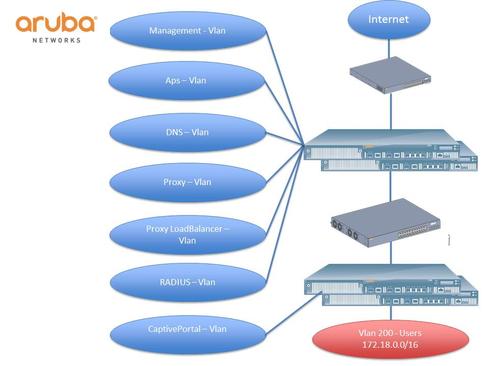Black Hat USA's wireless network offers authenticated, secure access as well as 'open' access.
August 5, 2014

BLACK HAT USA -- Las Vegas -- There was once a time when logging onto the wireless network at Black Hat came with the risk of finding your username or other information on the Wall of Sheep, where unsecured, sniffed user traffic was blasted on the screen for all to see in the name of security awareness.
But the Wall of Sheep is long gone (but lives on at DEF CON) and the Black Hat USA wireless network this year offers a secure locked-down option for attendees, where users are authenticated to the WPA2-based network with their own authentication key. All traffic is encrypted, even among users who opt for open network access with a shared authentication credential.
The full-blown conference begins tomorrow, but the past two days of training sessions and classes at Black Hat have brought in more than 650 WLAN users, with about half as of today on the secured network. That's a far cry from when Black Hat WLAN network sponsor and architect Aruba Networks last hosted the conference WLAN two years ago and only about 80 users opted for the secured WLAN option.
So what security person in their right mind would opt for the "open" WiFi at Black Hat without authentication? That would be seminar attendees testing out their new hacking tools, or researchers using the unsecured segment for their work, for instance, say the Black Hat USA network operations team led by Aruba Networks, which is supplying and managing the network this year.
"There's wireless penetration testing going on right now in classes and they want to try out their new tools on the show network ... a lot of those tools require open networks," says Jon Green, CTO of Aruba Government Solutions.
The secured Black Hat wireless network forces the user to authenticate to the network and encrypts user sessions and prevents any peer-to-peer communication within the network. "No one is able to wiretap your sessions," Green says.
The one-gigabit WLAN includes 118 access points, 16 Ethernet switches, and three wireless controllers, one of which serves as a firewall. Aruba's ClearPass access management software handles user provisioning.
Aside from authenticating users and encrypting their traffic, the show network also runs wireless intrusion detection systems. "The IDS is looking at what people are doing at the wireless layer, if they're trying to impersonate one of our access points, or the show network, or doing a denial-of-service on the wireless network," Green says.
All secured wireless sessions get sent through the wireless controller, where they maintain their encrypted state, according to Aruba. "Once the traffic gets to the controller, every user has firewall policies assigned to them. By default they can do all they want to the Internet. But no wireless clients can talk to" each other, he says.
"That cuts down on nefarious stuff people might want to do," he says.
Overall, the wireless attack landscape hasn't changed much, he says. The IDS will alert any suspicious activity, and if the NOC team sees any DoS or other nefarious activity, they can pinpoint the source within the network. "We will walk over and … [find] the guy with the funny antenna on top of his laptop and tell him to stop," Green says. That happens at least a couple of times at most conferences, he says.
"We wait until it's significantly affecting" the network to take action, he says.
Outside threats are less of a worry to Aruba, mainly because any attack on the WLAN would require a long-range antenna, and the firewalls are locked down fairly tightly. Even if a user on the show network got infected, the malware would remain isolated on that machine, he says.
Even if a network user were to fall for a spear phishing attack and get infected, the attack theoretically would remain isolated and not affect other machines on the show network because they are blocked from communicating peer-to peer.
Read more about:
Black Hat NewsAbout the Author(s)
You May Also Like
The fuel in the new AI race: Data
April 23, 2024Securing Code in the Age of AI
April 24, 2024Beyond Spam Filters and Firewalls: Preventing Business Email Compromises in the Modern Enterprise
April 30, 2024Key Findings from the State of AppSec Report 2024
May 7, 2024Is AI Identifying Threats to Your Network?
May 14, 2024
Black Hat USA - August 3-8 - Learn More
August 3, 2024Cybersecurity's Hottest New Technologies: What You Need To Know
March 21, 2024


